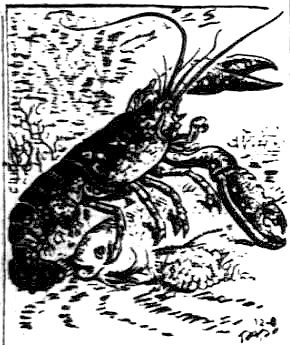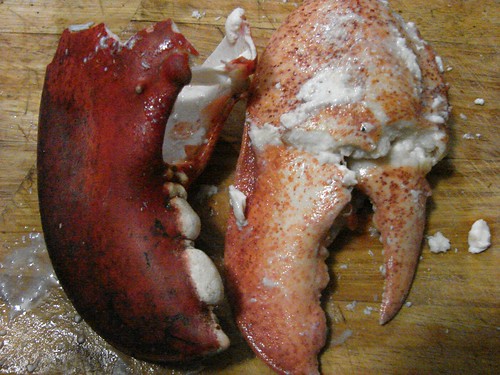You may have been hearing about record low lobster prices - reportedly as low at $1.25 a pound in some unnamed places - and figured it might be a good time for buying some bugs. But you need to be aware that these low prices are the ones being paid by wholesalers to the fishermen, and the savings aren't always being passed along the chain of middlemen to retail buyers like you, visiting the lobster pound or shopping at the fish market.
My wife Maryanne and I recently took a drive up the southern Maine coast from Kittery to a little north of Portland. The news had been reporting lobsters at record low prices, and we thought we'd combine a pleasant day trip with some bug buying (cryovac'd or packed tightly in freezer containers, cooked lobster meat freezes well, and if prices were really as low as the chatter indicated, I figured we'd buy a dozen or so lobsters to cook, pick, and freeze.)
Prices for lobsters vary widely, and if you're a New Englander hoping to get some really cheap bugs at the shore, you may be just as well off buying lobsters on sale at your local supermarket. In my area, over an hour inland, lobsters are running on sale at $4.99 a pound - and despite everything you might have heard on the news, that's about what you're going to pay at the lobster pounds in Maine.
There are three terms you need to be familiar with when you're buying lobster at a pound:
Culls - These are lobsters that have lost one of their large claws.
 Soft-shells - Lobsters moult annually, losing their hardened shells and growing a new one. The new shell is thin and soft enough to be torn away with your fingers - no crackers needed! - but it is also much larger than the meat inside, because the lobster needs enough room inside the new shell to grow for the coming year. Just remember that when you buy a soft-shell lobster, there's not as much meat inside as it looks. Check out the picture at left: I took a photo of a soft-shelled lobster claw against a bright light. The dark area in the shell is the shadow of the meat the shell actually contains.
Soft-shells - Lobsters moult annually, losing their hardened shells and growing a new one. The new shell is thin and soft enough to be torn away with your fingers - no crackers needed! - but it is also much larger than the meat inside, because the lobster needs enough room inside the new shell to grow for the coming year. Just remember that when you buy a soft-shell lobster, there's not as much meat inside as it looks. Check out the picture at left: I took a photo of a soft-shelled lobster claw against a bright light. The dark area in the shell is the shadow of the meat the shell actually contains.
Hard-shells - Lobsters contain the most meat when their shells are thick and hard - they have grown into the shell they created when they last moulted. Lots of meat, but it's more difficult to get out because the shell is thick and hard and needs to be cracked open with a cracker or even a crab mallet. Here's a picture of the meat from a hardshell claw. See how much larger it is, and how it fills the shell? But you can also see that the shell was about ¼-inch thick - I needed a hammer to get into it!
Okay, lesson over - back to the story about lobster prices. We found that the lowest prices - anywhere from $2.99 to about $4 a pound - were for small, soft-shelled culls weighing about a pound, and for small whole lobsters up to about 1¼ pounds.
Pound-and-a-half lobsters - the size you most often find in restaurant lobster dinners - were ranging from $3.75 to about $5 a pound for softshells.
As the sizes got larger, the prices increased steeply. One lobster pound in Portland, ME started their prices at $7.95 a pound for small softshells.
No matter where we were, hard-shell lobsters were about a dollar a pound more expensive.
Our biggest surprise, though, was the price of lobster dinners in restaurants, which averaged about $16.95 with a couple of places charging upwards of $24. Clearly, diners are not seeing the benefits of the lower lobster prices on the dock.
If you're heading for the coast in search of a New England Shore Dinner, welcome! You will find some good deals if you take some time and look around.



No comments:
Post a Comment